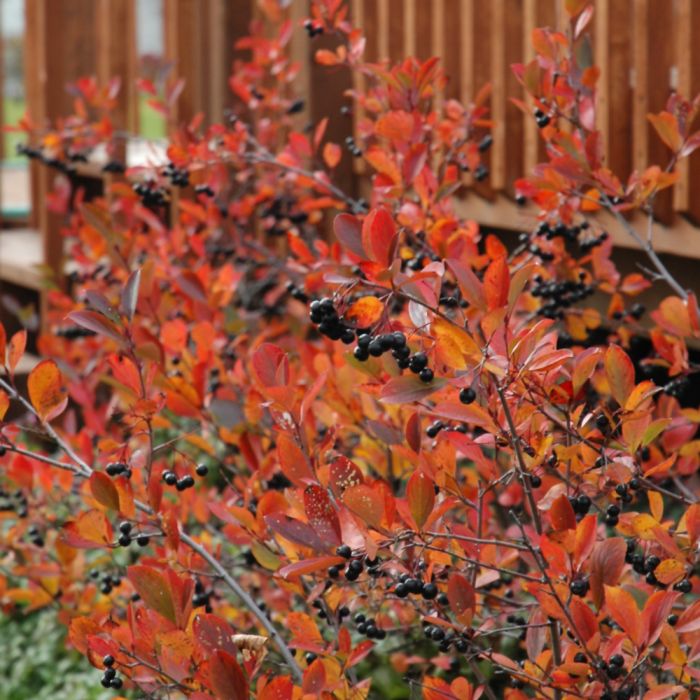Aronia, Black Chokeberry 'Autumn Magic'



- Sun Preference
- Full-Sun, Part-Sun
Description
Waxy dark green foliage with white spring flowers. Fall color is a mix of bright reds and dusky purples, with excellent black berry set holding well into winter.
Minnesota's Largest Selection of Shrubs
Elevate your landscaping with Gertens' unmatched variety of shrubs! Selecting the right shrubs for your backyard can enhance its beauty and functionality. Consider factors like sunlight, soil type, and mature size when choosing shrubs. For sunny areas, flowering shrubs like roses or hydrangeas can add color and charm. In shady spots, opt for shrubs like azaleas or hostas. Evergreen shrubs provide year-round interest and privacy, while deciduous shrubs offer seasonal color changes. At Gertens, we offer a wide selection of shrubs to suit every backyard need.
Details
Autumn Magic Black Chokeberry | Aronia melanocarpa 'Autumn Magic'
Height: 5 feet
Spread: 4 feet
Sunlight: Full Sun
Hardiness Zone: 3a
Brand: Gertens
Description:
A compact shrub with glossy dark green leaves, showy white flowers, glossy black berries, and red and purple fall colors; a great choice for massing or grouping, deserving of much greater use in the landscape
Ornamental Features
Autumn Magic Black Chokeberry features showy panicles of white flowers with brick red anthers at the ends of the branches in mid spring. It features an abundance of magnificent black berries from late summer to late winter. It has forest green deciduous foliage. The glossy oval leaves turn an outstanding dark red in the fall.
Landscape Attributes
Autumn Magic Black Chokeberry is a multi-stemmed deciduous shrub with an upright spreading habit of growth. Its average texture blends into the landscape, but can be balanced by one or two finer or coarser trees or shrubs for an effective composition.
This shrub will require occasional maintenance and upkeep, and is best pruned in late winter once the threat of extreme cold has passed. Gardeners should be aware of the following characteristic(s) that may warrant special consideration;
- Suckering
Autumn Magic Black Chokeberry is recommended for the following landscape applications;
- Mass Planting
- General Garden Use
- Naturalizing And Woodland Gardens
Planting & Growing
Autumn Magic Black Chokeberry will grow to be about 5 feet tall at maturity, with a spread of 4 feet. It tends to be a little leggy, with a typical clearance of 1 foot from the ground, and is suitable for planting under power lines. It grows at a slow rate, and under ideal conditions can be expected to live for approximately 20 years.
This shrub should only be grown in full sunlight. It is an amazingly adaptable plant, tolerating both dry conditions and even some standing water. It is not particular as to soil type or pH, and is able to handle environmental salt. It is somewhat tolerant of urban pollution. This is a selection of a native North American species.
More Information
| Gerten Grown Plants | Gerten Grown Plants |
|---|---|
| Sun Preference | Full-Sun, Part-Sun |
| Mature Height (Range) | 2 - 5 feet |
| USDA Hardiness Zone | 3, 4, 5, 6, 7 |
| Common Family Name | Chokeberry |


